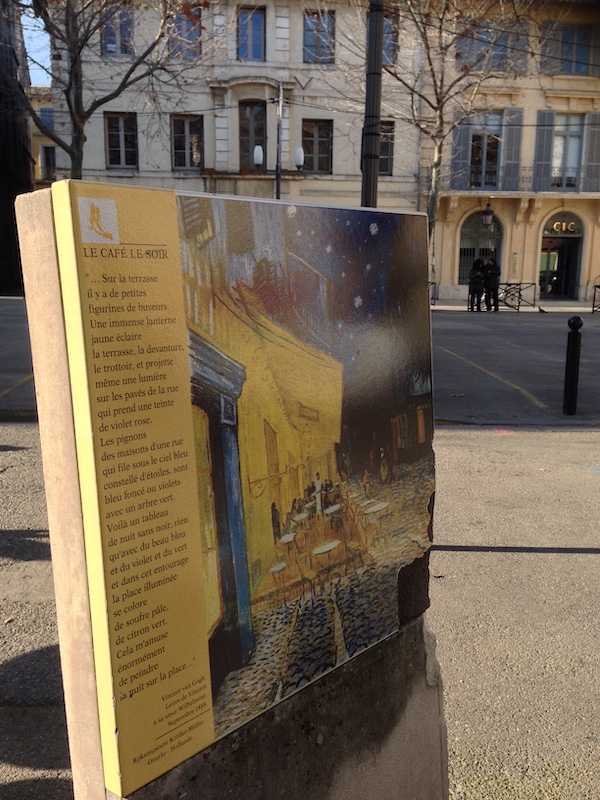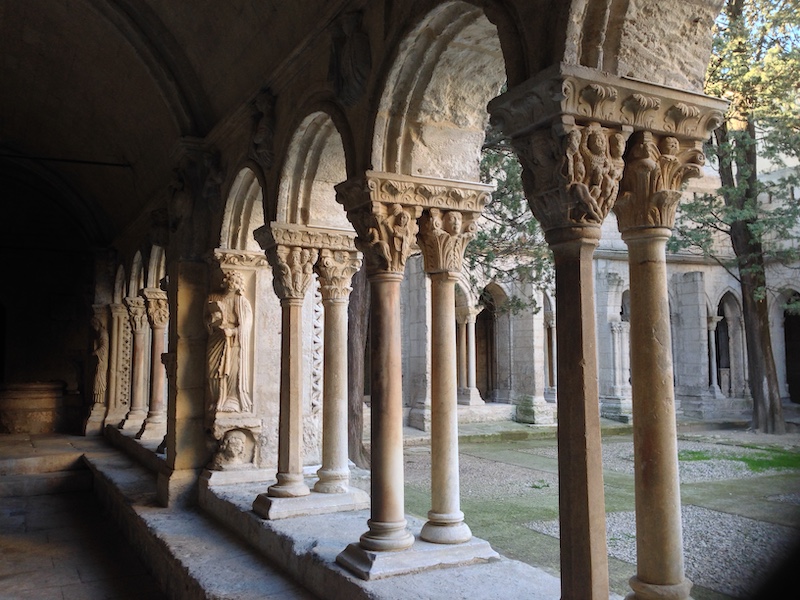Attracted by the unique light, artist Vincent van Gogh created arguably his most beautiful paintings in Provence. But did you know that there is currently not a single painting of his currently permanently located here?
Vincent van Gogh was a Dutch post-impressionist painter who is among the most famous and influential figures in the history of Western art. In just over a decade he created about 2,100 artworks, including around 860 oil paintings, most of which date from the last two years of his life. These include landscapes, still lifes, portraits and self-portraits, and are characterised by bold colours and dramatic, impulsive and expressive brushwork that contributed to the foundations of modern art.
Van Gogh suffered from psychotic episodes and delusions and though he worried about his mental stability, he often neglected his physical health, did not eat properly and drank heavily. For many years he drifted in ill health and solitude before taking up painting in 1881, aged 28, having moved back home with his parents. His younger brother Theo supported him financially, and the two kept up a long correspondence by letter, many of which have survived, and today give us interesting insight into his life.
His early works, mostly still lifes and depictions of peasant labourers, contain few signs of the vivid colour that distinguished his later work. In 1886, he moved to Paris, where he met members of the avant-garde. As his work developed he created a new approach to still lifes and local landscapes.
Vincent in Provence
Vincent left Paris for the South of France in early 1888, arriving into Arles train station on 21 February. He rented four rooms in the Yellow House, which he also used as a studio.
The rooms were unfurnished and had been uninhabited for months so they had to be furnished before he could fully move in, but he was able to use it as a studio. He wanted a gallery to display his work, and started a series of paintings that eventually included Van Gogh’s Chair, Bedroom in Arles, The Night Café, Café Terrace at Night, Starry Night Over the Rhone, and Still Life: Vase with Twelve Sunflowers, all intended for the decoration for the Yellow House.
Van Gogh wrote that with The Night Café he tried “to express the idea that the café is a place where one can ruin oneself, go mad, or commit a crime”.
Van Gogh’s paintings of sunflowers are among his most famous. He painted two series of sunflowers in Arles, France: four between August and September 1888 and one in January 1889. The oil paintings on canvas, which depict wilting yellow sunflowers in a vase, are now displayed at museums in London, Amsterdam, Tokyo, Munich and Philadelphia.
His friend Paul Gauguin agreed to join him in Arles, and they painted together often, including at the picturesque Alyscamps. However, their relationship deteriorated and they quarrelled fiercely about art. Van Gogh had an increasing fear that Gauguin was going to desert him.
On 23 December 1888 he stalked Gauguin with a razor and then cut off the lower part of his own left ear, which he wrapped in newspaper and gave to a girl named Rachel, who lived in the local brothel, asking her to “keep this object carefully”.
The later years
Gauguin left Arles and Van Gogh was hospitalised periodically after that – suffering from hallucinations and paranoia that he was being poisoned. Locals dubbed him “the redheaded madman”. He voluntarily entered the Saint-Paul-de-Mausole asylum in St-Rémy-de-Provence in May 1889, where he stayed for a year. Here he completed over 150 drawings and 143 paintings, including some of his best known works: Irises, Wheat Field with Cypresses, The Siesta and The Starry Night.
In May 1890, he moved to Auvers-sur-Oise, near Paris. He painted local landscapes, including Crows in the Wheatfields. On 27 July 1890, Vincent walked into this same wheat field and shot himself. He died two days later.
He was not commercially successful in his lifetime; he was considered a madman and a failure. Vincent van Gogh became famous after his suicide, and exists in the public imagination as the quintessential misunderstood genius, an artist who embodied the space in which madness and creativity converge.
Today, his works are among the world’s most expensive paintings to have ever sold at auction, and his legacy is honoured in the Van Gogh Museum in Amsterdam, which holds the world’s largest collection of his paintings and drawings.
Visit van Gogh related places in Provence
- Saint-Paul-de-Mausole (Saint-Rémy-de-Provence) – The tourist office has a “Circuit Van Gogh”, a walking route of the sites of 21 of his paintings, with information panels for each. The route includes the cloister.
- Vincent van Gogh Foundation, Arles – houses art exhibitions.
- Arles tourist office – The visitor’s centre in Arles provides a walking tour map of 10 reproductions on easels depicting actual places throughout Arles, including Starry Night Over the Rhone.
- The Yellow House (Place Lamartine, Arles) – sadly this building was bombed during WWII. Today a newsstand and boulangerie stand in its place.
- Café Terrace (Place du Forum, Arles) – still operational today and now named Café Van Gogh, this is the café he painted in The Café Terrace on the Place du Forum, Arles, at Night.
- L’Espace Van Gogh – This is where Van Gogh was taken after he cut off a portion of his ear. He also painted the courtyard of this former hospital
- Follow in Vincent’s footsteps on “the Van Gogh Route“.
- arles,
- art,
- artist,
- Paul Gauguin,
- Saint-Paul-de-Mausole,
- St Remy-de-Provence,
- vincent,
- Vincent van Gogh
Related Posts
-

Arles and the Camargue
Arles is a charming city on the Rhône River famed for inspiring…
-

Our Top 10 days out
There is so much to see and do in the Vaucluse (and…











